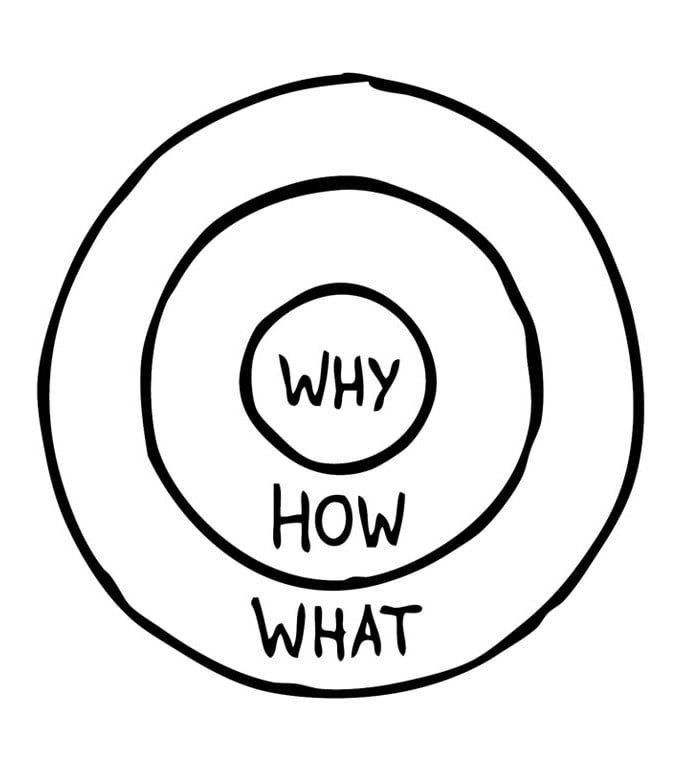 At Northwoods, we are focused on starting with why. I believe starting with why provides a constant reminder for the team of the collective goal we are all working toward, which is ultimately to improve outcomes for children and families by empowering the practice.
At Northwoods, we are focused on starting with why. I believe starting with why provides a constant reminder for the team of the collective goal we are all working toward, which is ultimately to improve outcomes for children and families by empowering the practice.
To do this, we need to meet the user where they are—both physically, and in terms of practice.
As one of APHSA’s 2019 Emerging Leaders, I was invited to present a poster at the annual ISM conference showcasing a solution that Northwoods has implemented.
I chose to present on this topic, Meeting Users Where They Are, because it influences every solution and service we offer.

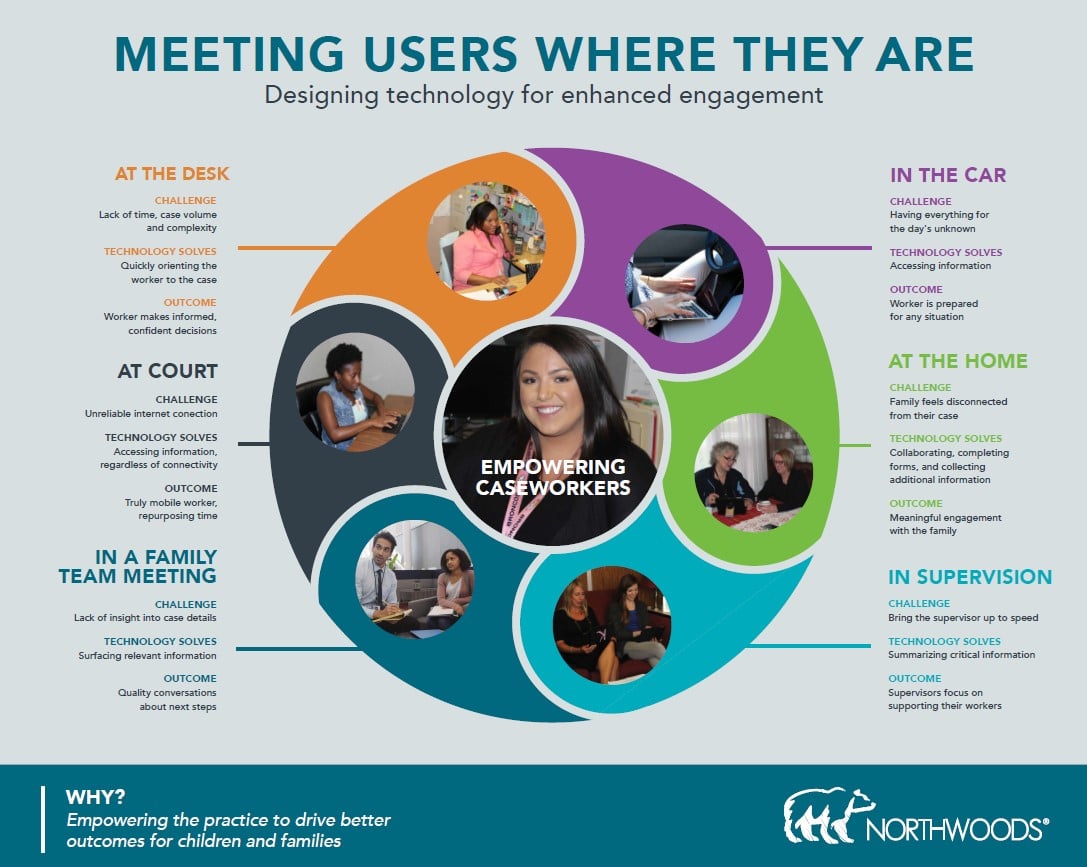

To meet the user where they are, you must do anything you can to walk in their shoes.
I’ve been fortunate to spend the last several years observing a “day-in-the-life” of our users—doing ride-alongs with caseworkers, sitting in on home visits, shadowing them in the agency, leading focus groups, and facilitating one-on-one/group interviews.
I want to share some of the things I’ve learned about how to build technology that’s designed to enhance engagement in each of these different scenarios, which are just a few examples of how child welfare workers spend their day.

AT THE DESK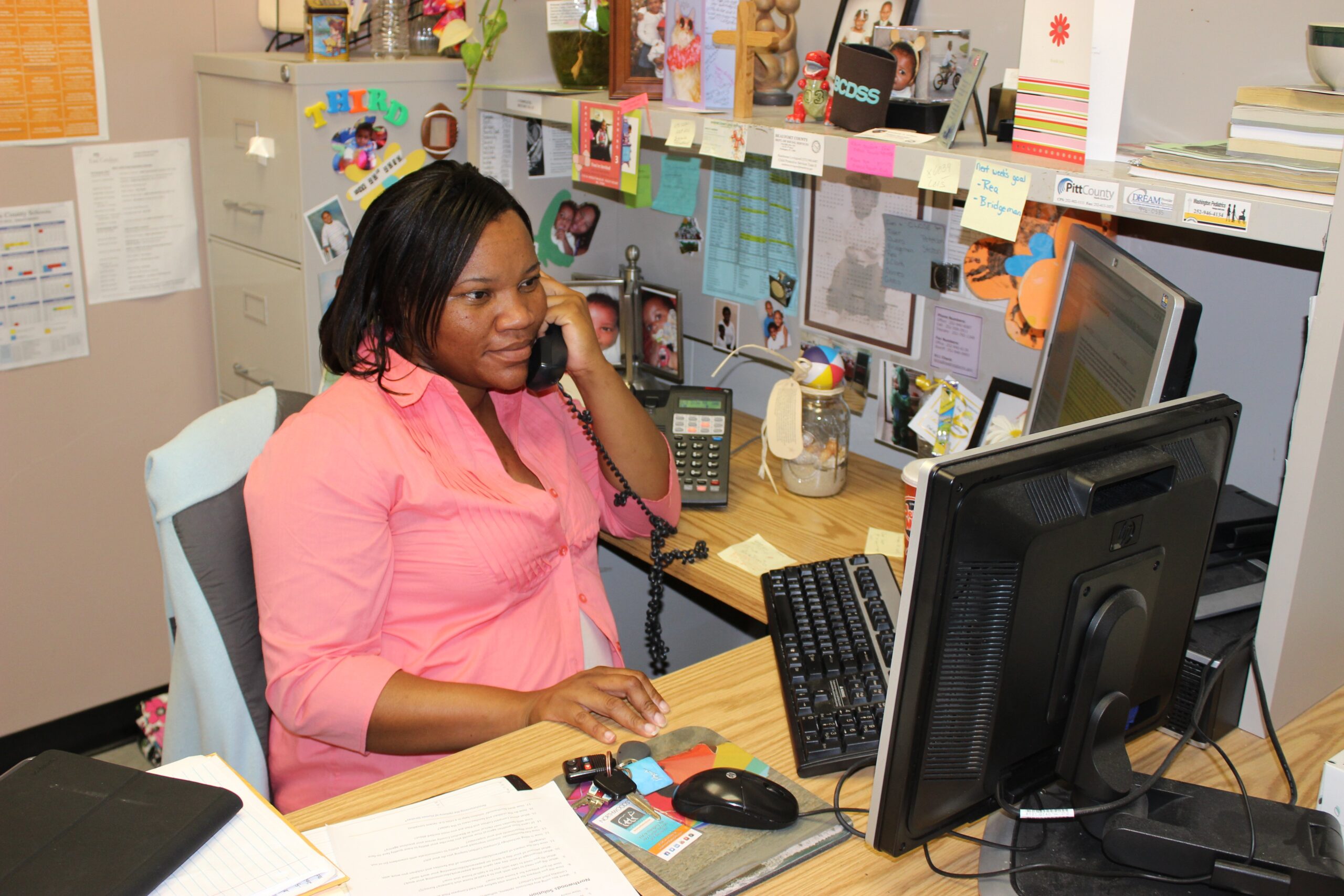
Child welfare workers are rarely at their desk. When they are, they’re typically doing one of two things: learning about a case before going on a visit or preparing the forms/paperwork they’ll likely need.
The challenge is, with limited time and so many complex cases, it’s difficult to fully digest and make use of all this information.
Imagine the confident decisions that workers could make if technology brought all this information to light. What has happened in the past? Why are we involved? Has the court been involved? Who are the important people? Who can be a positive support? How can I get this child and family on the right path?
They’d be more informed before they even leave the office, which will lay the foundation for better discussion and engagement once they’re with a family.

IN THE CAR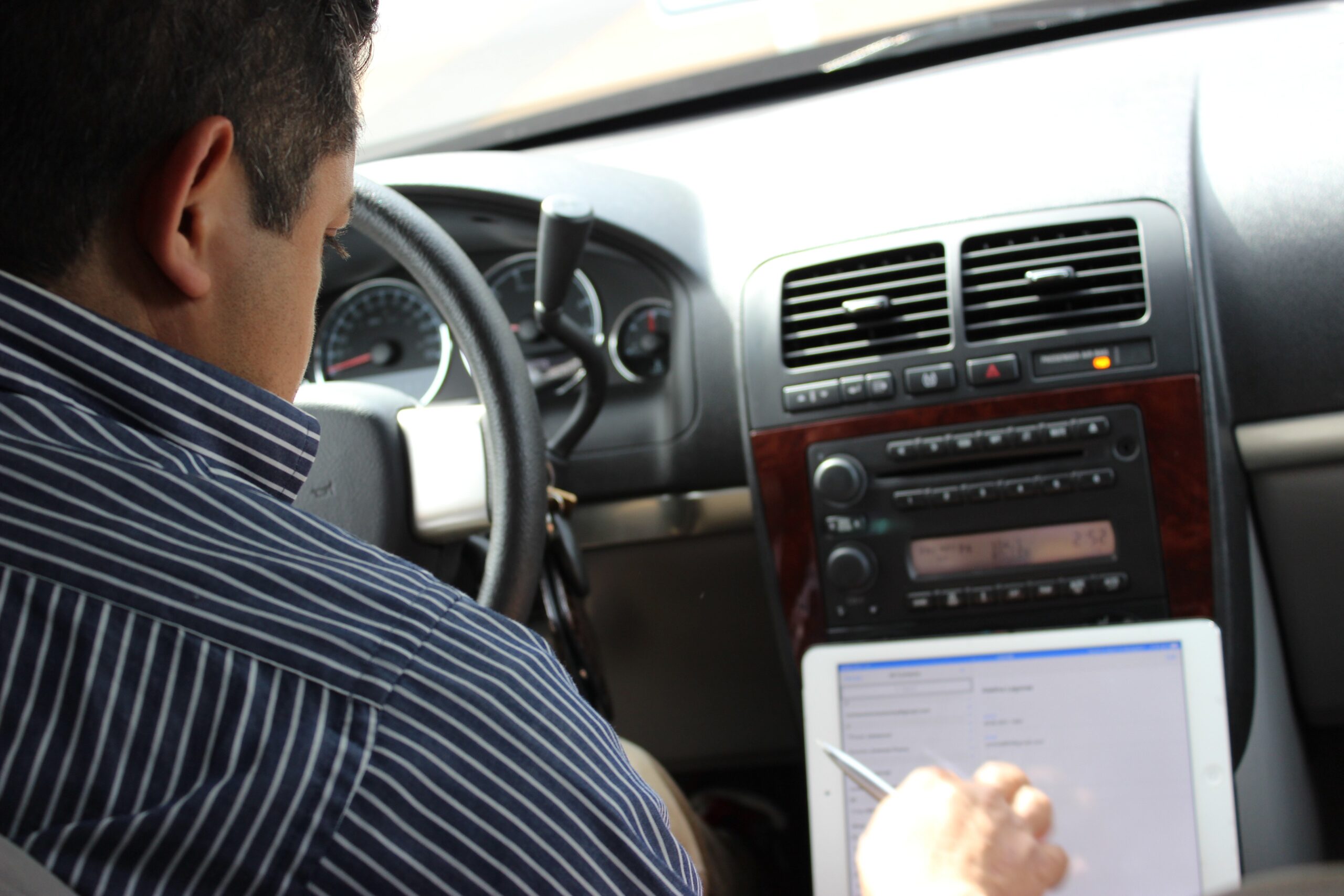
Child welfare workers have always been “mobile,” in the sense that they spend hours in their cars driving to and from the office, home visits, schools, court hearings, or elsewhere. But, this often means workers start the day by trying to prepare for any scenario they may encounter, including the countless forms and files they need to cart around just in case a need arises.
Technology can help mobilize their content, so a worker is more prepared for any situation. (Related resource: Investing in Essential Technology and Remote Connection for Child Welfare)
Imagine not only being able to cut down travel to and from the office, but also giving workers immediate access to any case information or insight they might need while they are in the car—including critical case history, as well as the ability to collect anything new that day.

AT THE HOME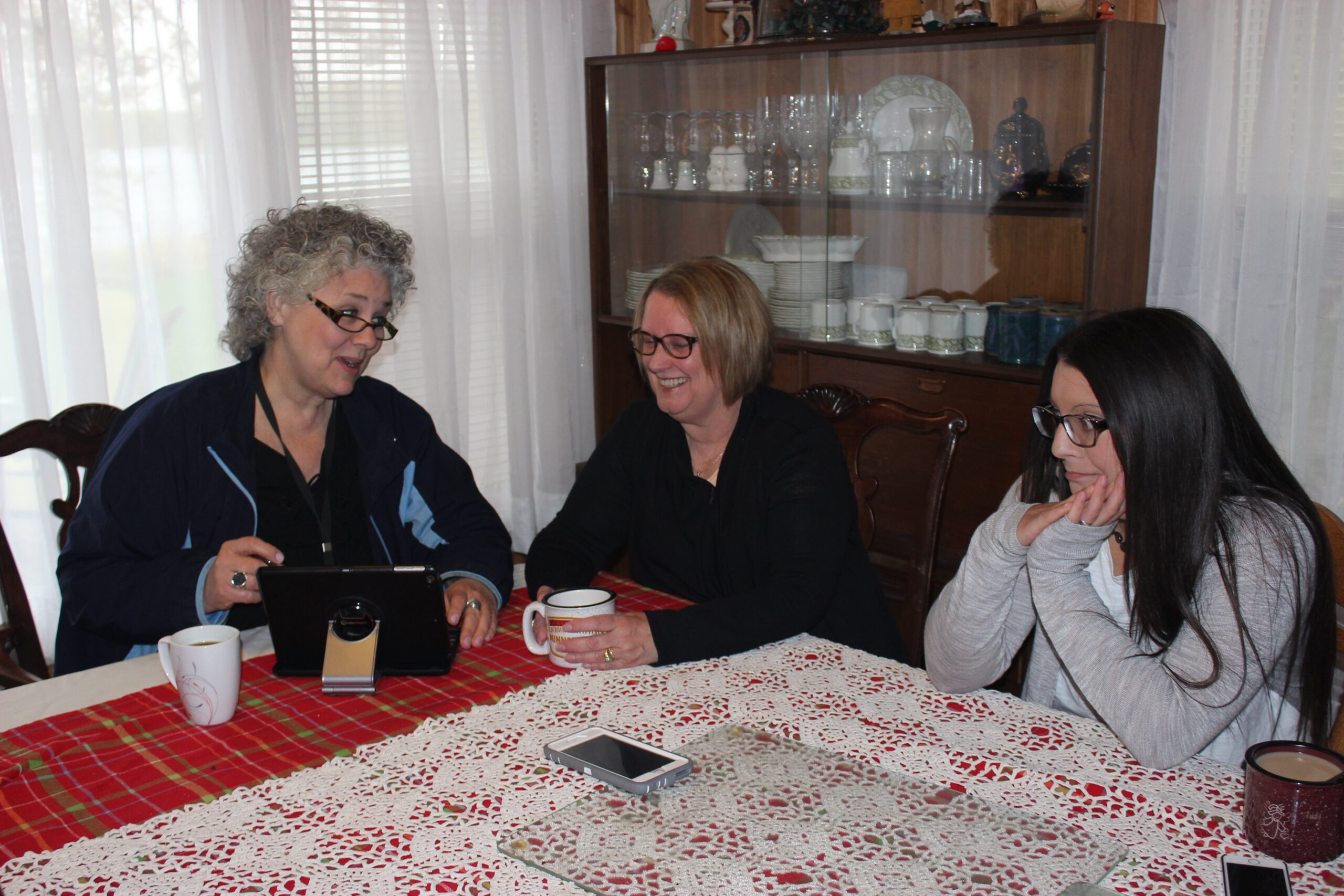
Families build stronger relationships with workers when they can collaborate on forms, plans, or assessments, see what’s being written, and be assured that entire processes are being complete.
In terms of technology, workers not only need to be able to access forms for themselves, but they also need the ability collaborate with the family while it is being filled out and share forms with outside providers while they’re still in the clients’ homes.
Let’s say a mom needs mental health or addiction services. Imagine if a worker could fill out the referral form with mom, have her sign it, and then email it off to the provider right in front of her. Not only will this build trust, but also help the mom quickly get access to services she needs.

AT COURT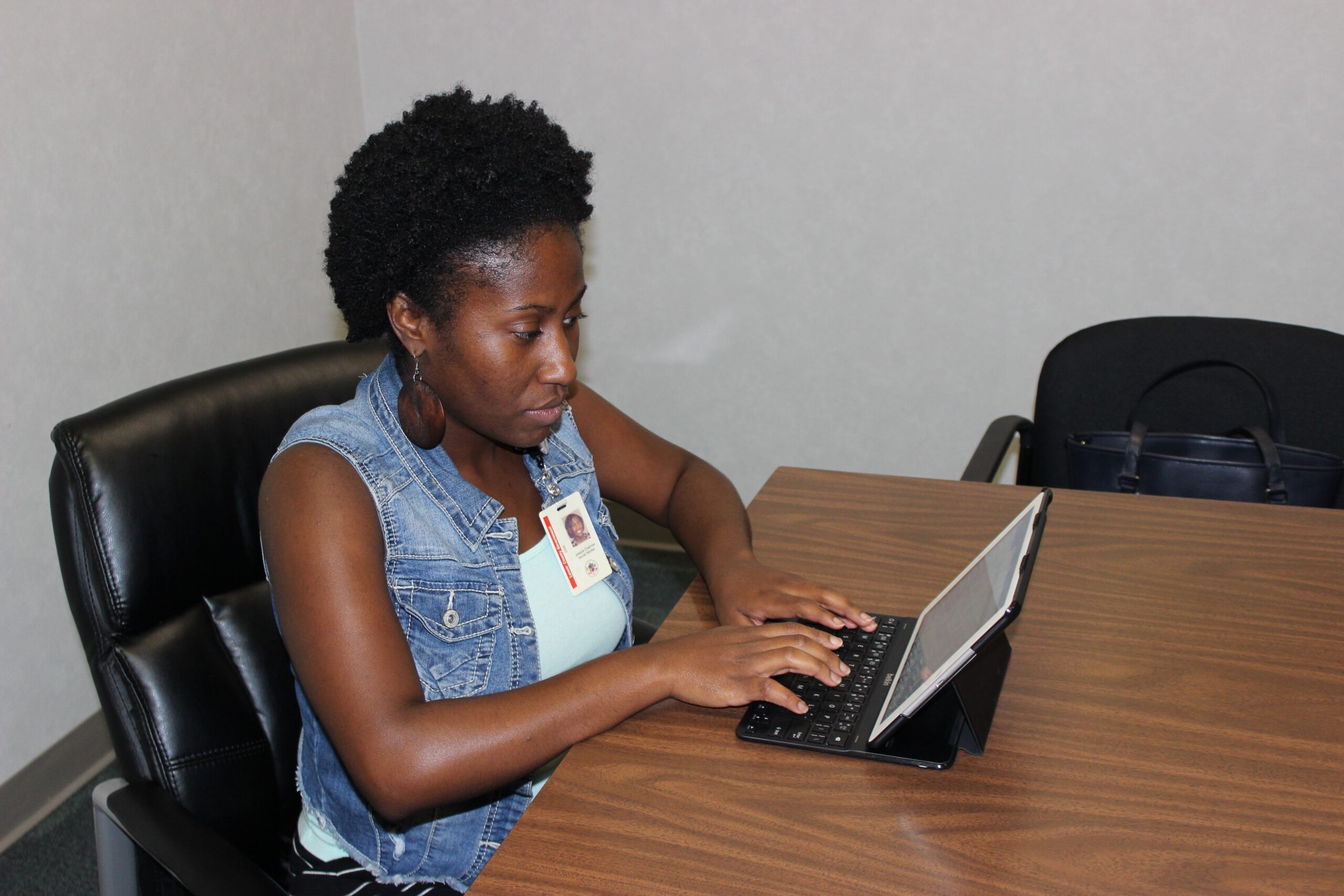
Think about a worker in court with a two-hour window when the judge will call the case. With existing tools that aren’t designed to meet a mobile worker’s needs, they’re often forced to just sit there and wait.
Imagine if workers could repurpose this previously spent “downtime” toward reviewing case history getting caught up on administrative work, like case notes. This could improve productivity while also potentially cutting down on overtime.
In this example, meeting the worker where they are also means understanding how connected they’ll be in any given situation. We know Wi-Fi and cell service are lacking in most courthouses, so technology designed for enhanced engagement shouldn’t require connection for workers to do their job.

IN SUPERVISION 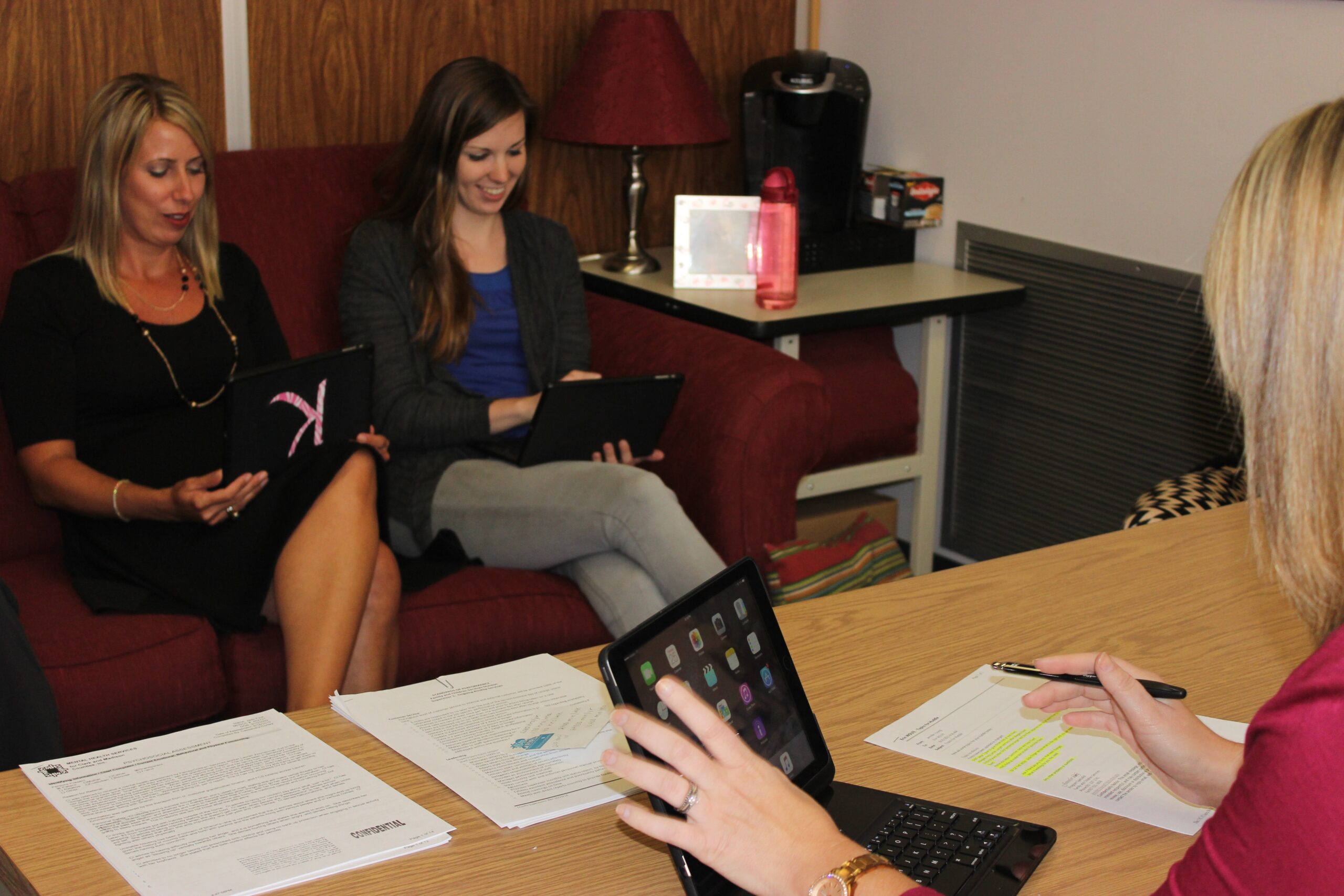
Internal collaboration—for example, with a supervisor—is critical for workers too. Yet, so much of this collaboration today is just getting up to speed on what’s going on and re-answering all the same questions the worker does when he or she first gets assigned a case.
This delays their ability to provide support and validate workers’ decisions.
Imagine if everyone at the agency was oriented to a case within minutes. Supervisors and workers can both be confident that every decision meets current policy, best practices, and most importantly, the best interests of those they serve. Better collaboration can drive better outcomes.

IN A FAMILY TEAM MEETING
Families are much more invested in safety plans they’ve helped create. For that to happen, everyone in the room needs to understand the whole story. The quicker everyone can access information, the quicker they can get to working together to form a plan for reunification.
Further, if the process has been transparent until and through the meeting, there should be greater likelihood that parents will be more forthcoming and cooperative, reducing the likelihood of recidivism and future safety risks. The team can get at the root cause of the family’s problems to make a holistic plan instead of just focusing on surface-level issues and needs.
Technology for enhanced engagement helps facilitate that collaboration between families and agencies by adding that layer of transparency to the planning process.

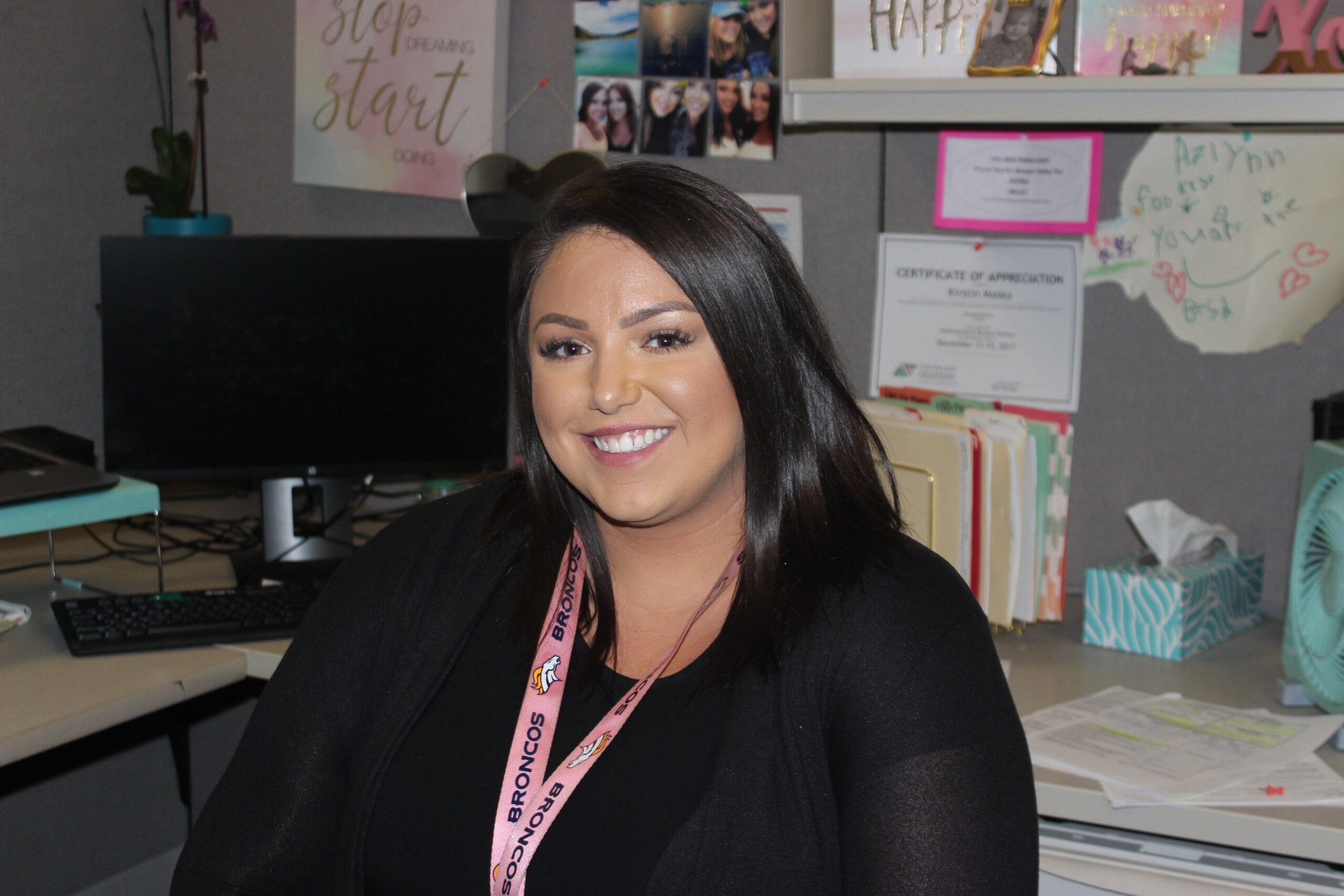 So, what’s the key takeaway from all this? Meeting the worker where they are doesn’t simply mean giving them access to information. What’s more important is making the information digestible and usable in any place, at any time. Further, the technology that surfaces and provides this information must be easy to use wherever a worker may be. Otherwise, it becomes just another barrier.
So, what’s the key takeaway from all this? Meeting the worker where they are doesn’t simply mean giving them access to information. What’s more important is making the information digestible and usable in any place, at any time. Further, the technology that surfaces and provides this information must be easy to use wherever a worker may be. Otherwise, it becomes just another barrier.
My ask for the software community is to design technology for the point of engagement, whether that’s in the home, in the car, during a collaborative meeting, at the desk, or anywhere else. More technology to effectively enter data and report bad outcomes is not what workers need.
For all the workers, I hope you’ll help us help you design technology that does the administrative work for you so you to focus on what you signed up to do.
Don’t settle. Let’s make technology that drives more informed decisions, better outcomes, and a stronger practice.
Lauren Hirka, product manager, sets the long-term vision and strategy for Traverse, our content collection and case discovery solution, including the product roadmap, messaging, and communication with internal and external stakeholders. Lauren has spent hundreds of hours with child welfare professionals to research and develop Traverse from its inception.



